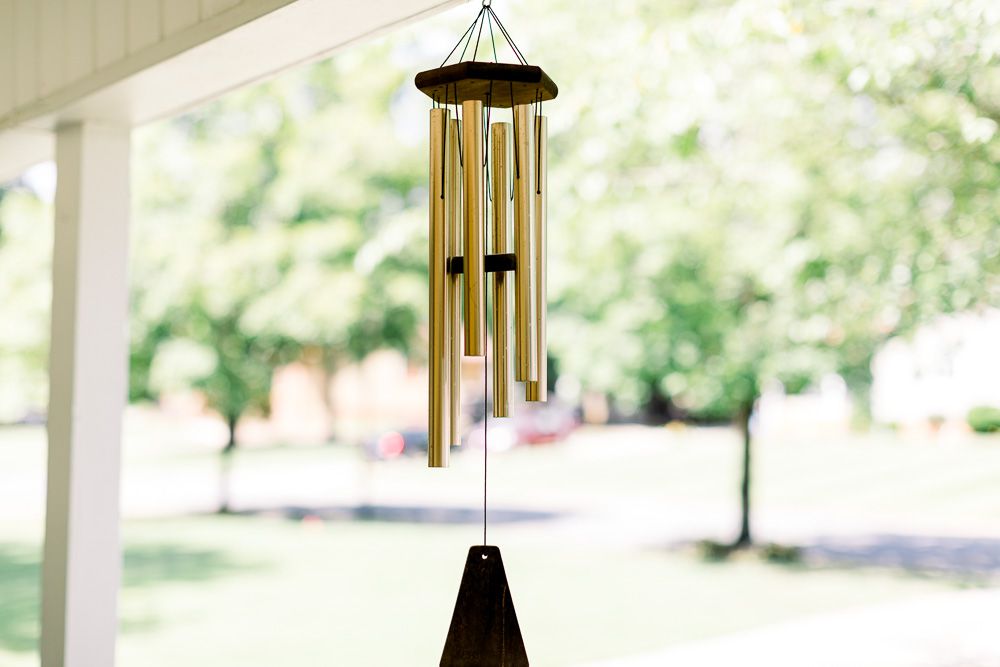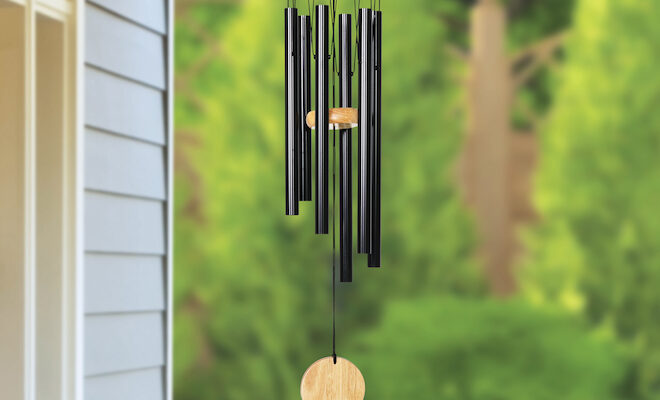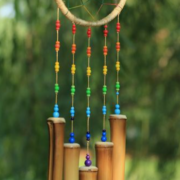While strolling through a garden, lounging on a cozy porch, or wandering through the countryside, you might have noticed the delicate, soothing sounds of wind chimes dancing in the breeze.
Windchimes can be traced through many cultures and times. They have been used for their melodious sound and aesthetic appeal.
The earliest wind chimes were found in Southeast Asia and made of bamboo, bones, and shells.
Wind chimes were used for their musical and spiritual properties in ancient Chinese, Japanese, and Indian cultures.
In medieval European churches, wind chimes were set up to summon people to prayer.
Explore the science behind wind chimes: understand why they chime, discover what they are made of, and learn how to re-string a wind chime.
How Do Wind Chimes Work?

Wind chimes make sounds when the wind moves them, and the vibrations of the chime tubes or other hanging elements produce the sound.
Here is how they work.
1. Wind
The primary force that sets wind chimes in motion is, of course, the wind itself.
When the wind blows, it exerts pressure on the surface of the chime tubes or hanging elements.
2. Movement
As the wind pushes the chime tubes, they begin to move.
The tubes or elements of the wind chime are typically suspended from a central point so they can swing freely in response to the wind’s force.
3. Vibration
When the chime tubes or elements move, they collide with each other or with a stationary surface, such as a clapper or a central striker.
These collisions cause the tubes or elements to vibrate.
4. Sound Production
The vibrations of the chime tubes or elements produce sound waves in the surrounding air.
These sound waves travel through the air to our ears, where we perceive them as the characteristic chiming or tinkling sounds of wind chimes.
The specific tones and harmonies produced by wind chimes depend on factors like the length, thickness, and material of the chime tubes or elements.
Depending on their design and construction, different wind chimes can produce a wide range of sounds, from soft and soothing to bright and melodic.
Factors that Affect the Sound of Wind Chimes

The specific tones and harmonies produced by wind chimes depend on several factors:
1. Material
The material of the hanging elements influences the timbre of the sound. Metal wind chimes produce bright, resonant tones.
The most common wind chimes are made of metal because of their excellent tuning precision and longevity.
Only metal wind chimes can be tuned to particular tones and notes of your choice. There are many different melodies available for metal wind chimes, and they can even be adjusted to well-known tunes and themes.
They are also waterproof and rust-proof. They will not chip or break and will not lose their beauty, so you do not need to worry about them wearing out.
Bamboo wind chimes are not as robust as metal ones, but they produce hollow, deep, and resonant tones.
These wind chimes can imitate soothing sounds like rain or exotic drums even though they cannot be tuned.
Choose bamboo wind chimes for a sustainable, all-natural method of stress relief that has calming tones.
Since bamboo is a natural and lightweight product, some splitting may occur over time and affect the sound quality.
The decorative style and color of ceramic, glass, and seashell wind chimes are often preferred over the sound, which ranges from a soft tinkling to a loud clanging.
2. Length and Design
The length of the hanging elements determines the pitch of the sound they produce.
Longer elements produce lower-pitched sounds, while shorter elements produce higher-pitched sounds.
The design of the wind chime, including the arrangement of the hanging elements and any decorative features, can influence the overall sound and aesthetic appeal.
3. Shape and Resonance of Wind Chimes
Resonance, that is, the ability of the chime to vibrate and make sound, is influenced by the shape of the wind chime.
A flat, disc-shaped wind chime will sound different from a tube-shaped one.
4. Number of Tubes
The number of notes a wind chime can play depends on how many tubes it contains.
Wind chimes with numerous tubes may mix more sounds and produce various harmonies.
A smaller range of well-tuned sound is available from wind chimes with fewer tubes.
Wind chimes are often used as decorative and calming elements in gardens or outdoor spaces.
Their gentle sounds result from the interplay between the wind and the chimes’ physical properties.
Conclusion
Wind chimes are a product of science and a canvas for artistic expression.
Craftsmen and artists worldwide create unique wind chimes that reflect their creativity and cultural influences.
Wind chimes are a fusion of art and science, from intricate glasswork to handcrafted metal designs.
So, the next time you hear the enchanting wind chimes dancing in the wind, take a moment to appreciate the science, artistry, and therapeutic power behind these timeless instruments that have been cherished for millennia.










Comments